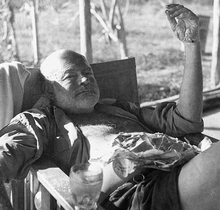Midlife
The Upside and Downside of Middle-Aged Risk Taking
What's the evidence for the midlife crisis and exactly how risky is it?
Posted September 5, 2013

As a teenager I remember asking my parents if it was possible to have a midlife crisis before you left high school. This was followed by hearty chuckles. Nonetheless, it forces one to ask the question: What exactly is a midlife crisis and how would you know if you were having one? More specifically, is there evidence that such a thing even exists? If so, what are the symptoms? Does midlife put you at risk of divorce, dying in a motorcycle accident, or failing to open your parachute?
There are many ways to answer these questions. In an effort to be fair to our imaginations, I've aimed to cover some of the dominant possibilities. In addition, I've tried to wrangle up past evidence as well as taking my own look at data from the Centers for Disease Control in the U.S., recorded between 1999 and 2010. Hopefully this will give some indication of the relative risks and provide a look at both upside and downside risks.
The Upside
Divorce: Divorce does not increase in middle age. The National Center for Family and Marriage Research at Bowling Green State University finds a steady decline in divorce rates across the adult lifespan. This is a typical pattern in other data sets as well. Peak divorce rates occur around twenty years of age with between 30 and 45 divorces per 1000 married couples per year. By the late forties and early fifties this is down to about 15 divorces per 1000 married couples, and it continues to decline from there. One of the biggest risk factors for divorce is having already had one—so avoid that, where possible.
Behind the wheel: People in midlife might be more likely to buy expensive and fast cars, but then again these people make more money than they did when they were younger—and they have places to go. So perhaps a better indicator would be whether or not we see a rise in fatal car accidents. The answer appears to be no. Numerous studies and the CDC data show that crash rates and fatal car accidents are at their lowest among people in their 40s and 50s. Accident rates rise again when people are in their 70s, but the majority of these accidents happen between 1 and 20 miles per hour. By then, it’s a different kind of joy ride.
Homicide: Does middle age increase the chances that people will become homicidal killers? Alas, no. Starting from a peak homicide rate around the 20s, people grow increasingly meek as they get older. This is best known from the research of Wilson and Daly who studied homicide rates in Detroit, among other places. The principle results were that young, unmarried males were the primary offenders. The middle-aged, on the other hand, seemed to have their inner demons fairly well under control.
The Downside
Depression: Midlife can indeed be truly depressing. A number of studies on happiness have consistently found that happiness across the lifespan is a U-shaped function. People are saddest when they're about middle-aged, and they tend to be happier when they are younger or older. It appears this has nothing to do with being human. New research led by Alexander Weiss at the University of Edinburgh even finds this U-shaped pattern in great apes.
Ernest Hemingway, midlife thrill-seeker.

Ernest Hemingway, midlife thrill-seeker.
Suicide:
Taking chances: There has been some suspicion lately that middle-aged men may take more risks, highlighted by a recent article in the Times reporting an increase in deaths on Britian's coastline. With that in mind, I looked at data from the CDC on drowning and motorcycle accident rates. Not counting accidents in individuals over 70 or under 5, there are two telling peaks across the male adult lifespan: one in the late-teens and early twenties and a second smaller peak in the mid-forties. This second peak represents an additional death toll of about 10 people per million in the age class. It's certainly nothing near the size of the midlife suicide peak. On the not unlikely chance that suicide victims and adventure-seekers are two sides of a complicated coin, one is forced to wonder if the thrills might be worth the risk.
In sum, there does appear to be a midlife signal among the noise, though it doesn't stand out as a hotbed of risk taking. It might leave some people a little more down than up. These people should feel some solace in knowing that things do indeed get better. For middle-aged men feeling the call of youth, my recommendation is to wear a helmet and a life-vest at all times.
Thomas Hills on Twitter




